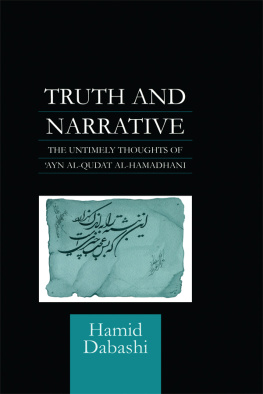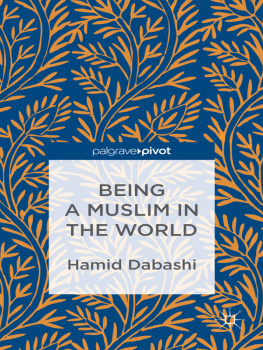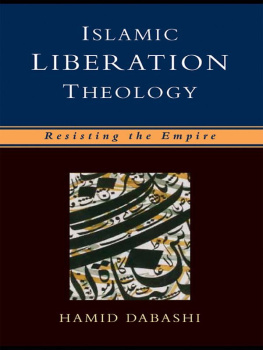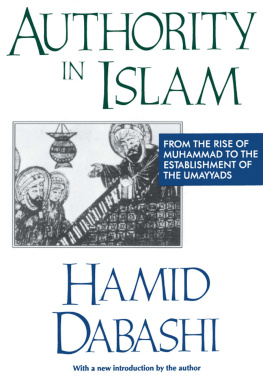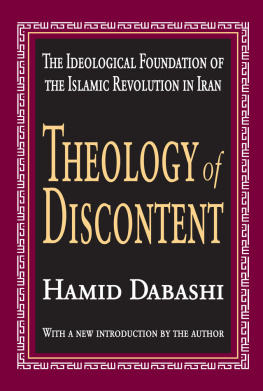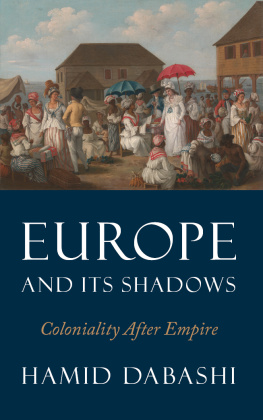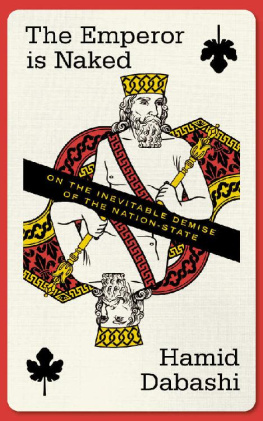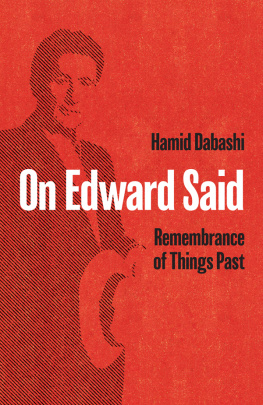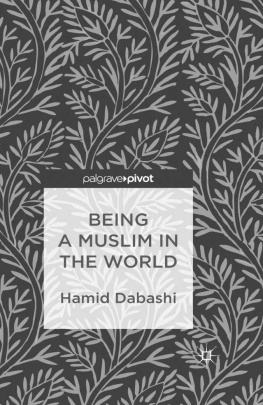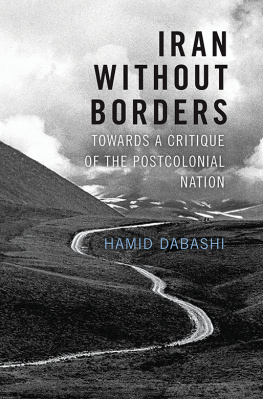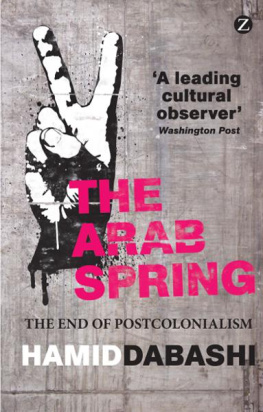Dabashi Hamid - Contemporary Art, World Cinema, and Visual Culture
Here you can read online Dabashi Hamid - Contemporary Art, World Cinema, and Visual Culture full text of the book (entire story) in english for free. Download pdf and epub, get meaning, cover and reviews about this ebook. publisher: Book Network Intl Limited trading as NBN International (NBNi), genre: Romance novel. Description of the work, (preface) as well as reviews are available. Best literature library LitArk.com created for fans of good reading and offers a wide selection of genres:
Romance novel
Science fiction
Adventure
Detective
Science
History
Home and family
Prose
Art
Politics
Computer
Non-fiction
Religion
Business
Children
Humor
Choose a favorite category and find really read worthwhile books. Enjoy immersion in the world of imagination, feel the emotions of the characters or learn something new for yourself, make an fascinating discovery.

- Book:Contemporary Art, World Cinema, and Visual Culture
- Author:
- Publisher:Book Network Intl Limited trading as NBN International (NBNi)
- Genre:
- Rating:4 / 5
- Favourites:Add to favourites
- Your mark:
- 80
- 1
- 2
- 3
- 4
- 5
Contemporary Art, World Cinema, and Visual Culture: summary, description and annotation
We offer to read an annotation, description, summary or preface (depends on what the author of the book "Contemporary Art, World Cinema, and Visual Culture" wrote himself). If you haven't found the necessary information about the book — write in the comments, we will try to find it.
Contemporary Art, World Cinema, and Visual Culture — read online for free the complete book (whole text) full work
Below is the text of the book, divided by pages. System saving the place of the last page read, allows you to conveniently read the book "Contemporary Art, World Cinema, and Visual Culture" online for free, without having to search again every time where you left off. Put a bookmark, and you can go to the page where you finished reading at any time.
Font size:
Interval:
Bookmark:

Contemporary Art, World Cinema, and Visual Culture
Contemporary Art, World Cinema, and Visual Culture
Essays by Hamid Dabashi
Edited with an Introduction by Hamid Keshmirshekan

Anthem Press
An imprint of Wimbledon Publishing Company
www.anthempress.com
This edition first published in UK and USA 2019
by ANTHEM PRESS
7576 Blackfriars Road, London SE1 8HA, UK
or PO Box 9779, London SW19 7ZG, UK
and
244 Madison Ave #116, New York, NY 10016, USA
2019 Hamid Keshmirshekan Introduction, editorial matter and selection; 2019 Hamid Dabashi Individual Chapters
The moral right of the authors has been asserted.
All rights reserved. Without limiting the rights under copyright reserved above,
no part of this publication may be reproduced, stored or introduced into
a retrieval system, or transmitted, in any form or by any means
(electronic, mechanical, photocopying, recording or otherwise),
without the prior written permission of both the copyright
owner and the above publisher of this book.
British Library Cataloguing-in-Publication Data
A catalogue record for this book is available from the British Library.
ISBN-13: 978-1-78308-919-2 (Hbk)
ISBN-10: 1-78308-919-9 (Hbk)
This title is also available as an e-book.
CONTENTS
Hamid Keshmirshekan
First and foremost I would like to thank Professor Hamid Dabashi for offering me this opportunity to edit this volume based on his outstanding writings on contemporary art, world cinema, and visual culture. He was also so generous with his time and constant help with providing immediate answers for my questions on the textual materials, and approaching artists for high-quality images of their works to be included in this book.
I am equally grateful to all of the eminent artists whose works I have had the privilege of using in this book. In particular I wish to thank Shirin Neshat, Nicky Nodjoumi, Amir Naderi, Tarek Al-Ghoussein, Shoja Azari, Nahid Haghighat, Azadeh Akhlaghi, Farhad Moshiri, the late Bahman Jalali and the late Ardeshir Mohassess for their permission for reproduction of their works, and their respective galleries and estates for their very kind help in obtaining those pictures.
I would like to acknowledge the SOAS, University of London library for providing the online and other resources which were greatly useful in shaping this project.
I should further thank my daughter, Pegah, for providing the format for the cover design of this volume with high competency.
Last but not least I would like to thank Anthem editorial and production team, in particular Tej P. S. Sood, Publisher and Managing Director, for his attention and support, Nisha Vetrivel, the project manager in the Production Department, for her courtesy and consideration and also Abi Pandey in the Editorial Department of Anthem Press.
Hamid Keshmirshekan
I was thrilled when Hamid Dabashi, the cultural critic and scholar of comparative literature, suggested to me if I would be willing to edit a collection of essays on visual, literary and performing arts that he had written over the last quarter of a century and adapt them in a volume. I thought it would certainly be an inspiring experience, and it was indeed in practice. For me it was also an exploratory journey, a process of entering new territorial domains with a wide range of materials and methodological approaches and interdisciplinary strategies. As an art historian whose main preoccupation has been art and material culture of modern and contemporary Iran and the Arab world, it was a process of diving into a new territory of knowledge. I realized how Dabashis vast knowledge in historical and contemporary intellectual and artistic practices, Iranian Islamic philosophy, Persian literature, poetry, Arab and Muslim cultural representations, as well as contemporary theories, philosophy, social and political ideologies and public affairs has enabled him to portray an unprecedented critical perspective on artistic practices and their contextual implications.
Dabashis pioneering scholarly writings on the subjects of cultural and intellectual history and postcolonial studies through criticism of Orientalism and imperialism are integrated assets in his writings on interpretation of artistic and cinematic materials. This book is in fact based on works of a cultural theorist who extrapolates more universal issues of concern to art criticism in general. The main objective of this volume is to open up the horizons of critical thinking about these arts in a manner that we do not have any available source except by leading European or American critics. By putting these scattered materials together in this anthology, an attempt has been made to underline their theoretical and critical logicsomething quite unique and effectively nonexistent in the field. Given also the recent move within the global art historythe ongoing debates on the Western-centric art histories and criticism, the struggle for an alternative art historical/critical approach within the transcultural contexts and flows, and the search for new methodological and theoretical practicesthis book is indeed a response to this demand. It critically discusses and brings up these issues and concerns with reference to the arts of the Muslim world and beyond.
Dabashis everlasting involvement with postcolonial thoughts has allowed him to construct an extraordinary body of theoretical texts that will provide quite a novel angle for art criticism, literary and world cinema studies. The manner in which they inform a particularly critical angle is identified by a system of interpretation based on the legitimate
What coheres the chapters of this book together is in fact their reflection of Dabashis views on the question of authority, the existing unbalanced and hierarchical subject positions, and their indisputable consequential influence on controlling and determining knowledge and epistemology. He describes how methods and paradigms that were previously thought to be certain and unfailing could now be subject to a radical rethinking and revision. He moreover redefines important issues such as local vis--vis international, center vis--vis periphery, traditional vis--vis contemporary, past vis--vis present, classical vis--vis modern, north vis--vis south, east vis--vis west, and how artists, performers, writers, and other cultural agents react in response to these concepts.
One of the core arguments in this volume is directly linked to the point that Dabashi raises in his seminal essay: Can non-Europeans think? What happens with thinkers who operate outside the European philosophical pedigree? In that essay Dabashi points out that:
The question of course is not the globality of philosophical visions that all these prominent European (and by extension certain American) philosophers indeed share and from which people from the deepest corners of Africa to the remotest villages of India, China, Latin America, and the Arab and Muslim world (deep and far, that is, from a fictive European centre) can indeed learn and better understand their lives.
The central argument embracing the principal theme of the essay, prevalent in this volume too, is how thinkers and artists outside the realm of European (and American) domain could contribute to this world and how they are designated and honored in the age of globalised media. (the same way that African philosophy is named ethnophilosophy)? He continues by saying that
Font size:
Interval:
Bookmark:
Similar books «Contemporary Art, World Cinema, and Visual Culture»
Look at similar books to Contemporary Art, World Cinema, and Visual Culture. We have selected literature similar in name and meaning in the hope of providing readers with more options to find new, interesting, not yet read works.
Discussion, reviews of the book Contemporary Art, World Cinema, and Visual Culture and just readers' own opinions. Leave your comments, write what you think about the work, its meaning or the main characters. Specify what exactly you liked and what you didn't like, and why you think so.

